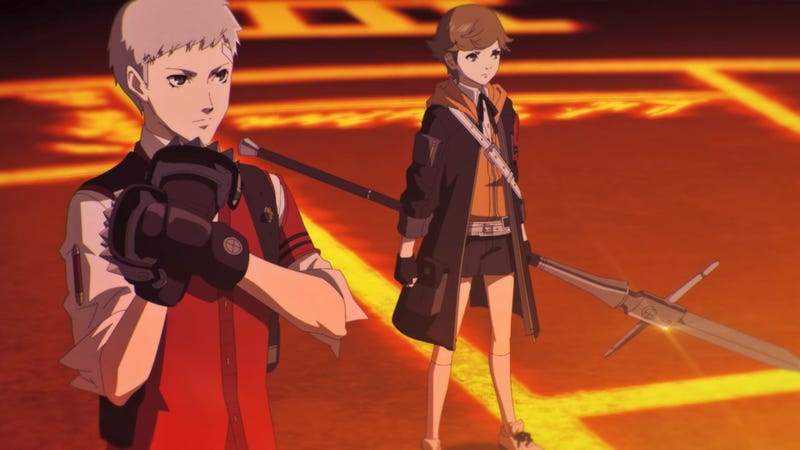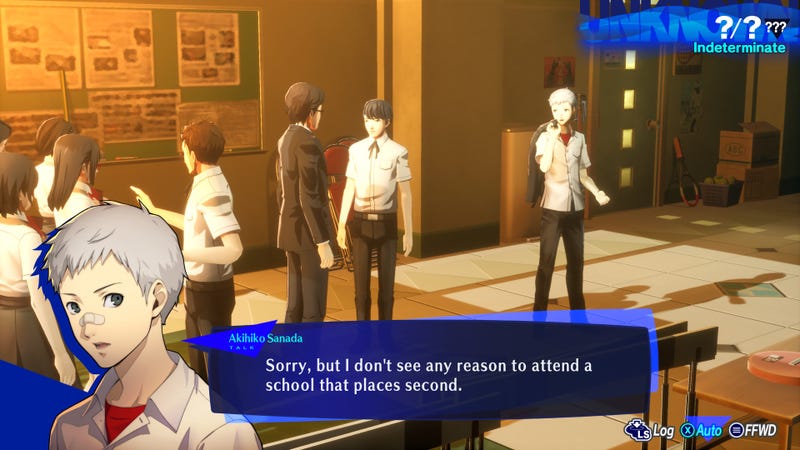As a “definitive” edition of the phenomenal 2006 RPG, 2024’s Persona 3 Reload was lacking in a few key features like the 2009 PSP port’s female protagonist route. Still, perhaps the most egregious omission was the lack of The Answer, the meaty, playable epilogue that was included in the 2007 Persona 3 FES re-release. Though there’s been some controversy about Atlus making it a paid DLC as opposed to packaging it into the main game, I still find this approach to adding new characters, story, and dungeons at the end of a game I’ve already played preferable to how Atlus went about repackaging Persona 4 and 5. The sequels’ “definitive editions” were added new story and characters interwoven into the original plot, requiring you to rebuy and replay the game to see what was new. Back in the PS2 days, The Answer was a divisive addition to a stellar ending some still argue might not have needed an epilogue in the first place, and a lot of the misgivings I had with the original have been faithfully recreated in Reload. But as a coda to Persona 3, I’m still drawn in by how The Answer unpacks the less glamorous realities of what the original game had to say. Spoilers for the original game follow.

How do you follow up an ending as good as Persona 3’s?
The Answer begins weeks after the end of Persona 3, during which the protagonist, Makoto Yuki, gave his life to defeat Nyx, a malevolent entity hellbent on destroying the planet. The epilogue starts fairly quiet, as the demon-fighting high school students of the Specialized Extracurricular Execution Squad are barely able to look at each other. They turn in their Persona-summoning tools, grieving not only the loss of their leader and friend but also the time they spent with one another in the Iwatodai Dormitory in the past year.

The original ending of Persona 3 is so spectacular because it ends with a group of friends joyfully coming together, proclaiming that their love for each other has given them each purpose throughout their journey, all while their leader slowly falls into a deep sleep never to wake up again. It loudly declares that human connection makes life worth living while underlying its impermanence, as the centerpiece that ties them all together is drifting away before their eyes. On its own, it’s a perfect encapsulation of everything Persona 3 has to say, but one naturally wonders how a group so invigorated would react to such a devastating blow. The Answer thoughtfully explores this question and is careful not to undo something that was already perfect.
Aigis, the Persona-using android of the group, was the last person to speak to Makoto before his passing, and she is taking things particularly hard. She thought she’d found a reason to live in protecting their team leader, and now that he’s gone, she’s trying to find a reason to keep living with all these human emotions she’s taken on. She’s the star of The Answer, but everyone in SEES is processing this differently. While some are trying to find reasons to bring the group together as the school year ends, others are actively avoiding the friends they’ve made so they don’t have to face the pain of having lost another piece of their collective puzzle. But circumstance brings these teens together and forces them to face each other and their grief once more.
SEES finds themselves in a time loop within their dorm as a new, shadow-infested dungeon opens up below the building. The phenomenon is similar to the base game’s Dark Hour, in which the real world is overtaken by a paranormal horde of demons. They can’t leave the boundaries of their old home until they face the horrors below, now with the help of a new android named Metis claiming to be Aigis’ sister. The time loop mostly gives a reason for The Answer to boil down the Persona formula to its barest core parts, shaving off the life simulation and time management elements for a much more streamlined story. But ironically, the time loop is an appropriate framing considering how repetitive and grindy The Answer feels compared to the main game.

Aigis and company spend most of The Answer going through procedurally generated dungeons fighting high-level shadows. As a combat skill check, The Answer is a solid, often challenging, occasionally monotonous test of your understanding of Persona 3’s systems. While you can technically access The Answer without a save file from the base game, it assumes you have knowledge not only of the story of Persona 3, but also the intricacies of its turn-based battles. Aigis gains Makoto’s ability to collect and summon multiple Persona, but you’re starting from scratch with her. Without the social links and other real-world elements to fall back on, The Answer is all dungeon crawling and shadow slaying.
If, over the years, that part of Persona has taken a back seat for you compared to the social elements, The Answer may not scratch an itch for you. Its dungeons are much more repetitive than the base game’s, but it is a concentrated, challenging combat check that will appeal to those who like to get their hands dirty building an arsenal of demons to fight with. Though the difficulty spike in the eleventh hour is just as jarring now as it was in the original, Reload’s quality-of-life improvements do make it at least more tolerable this time around. That isn’t to say that there aren’t still great character moments to be found between dungeons, however, and despite my grievances with The Answer’s structure, I was truly enthralled by the story building between the margins.
At the end of each dungeon, one of the members of SEES is confronted with a moment from their past. For some, this is recent, with a few of these flashbacks occurring during Persona 3 proper. For others, it’s years before meeting their teammates. These memories are put on display for all to see, and in most cases, it’s from a painful time in their lives. The members of SEES have all lived through tragedy, and that pain has brought them into this line of demon-hunting extracurricular activities.

Persona 3 posits that human connection helps us carry our burdens, but throughout each of these memories, we see how those same bonds open us up to more hardship. Before any of them had even met one another, most of the members of SEES had either lost someone important to them, whether it was a parent or a sibling, or they felt like they had someone to cherish in the first place. And then they faced more loss throughout their quest to stop the Dark Hour as the broody loner Shinji died protecting one of their own. Then, when all was said and done, they saved the world, but at the cost of their leader. How many times do these kids have to lose someone just to keep on living?
Well, the hard truth is, they will continue to lose people. Death is a natural fact of life, and every time that you’re reminded of that, it never stops hurting. Persona 3’s entire deal is that even though death comes for us all, life has meaning because we find people who make even the hardest day worth living through. The Answer is Persona 3 having to push its team to its limit and put that belief into practice.
The Answer can be frustrating, but its message is worth the grind
There’s a (compelling) argument to be made that Persona 3 didn’t need an epilogue. It’s still fascinating to look back on the original game’s ending and find forum threads of people trying to figure out what happened before The Answer wrote it in stone. But after the original strongly asserted that even in the face of death our bonds to one another give life meaning, it’s perhaps necessary for The Answer to show the work.
If you’ve lost someone important to you, whether through death or circumstance, you know that grief is not linear. We learn lessons each time it happens, but it doesn’t take away the new pain we feel when we lose someone once more. Shinji’s death could not prepare SEES for Makoto’s just as every other person they lost could not prepare them for the new, altogether different pain they’d feel each time someone slipped through their fingers into whatever comes next. No matter how many times you accept that loss is just part of life, you fall into the same stages of denial, anger, bargaining, depression, and acceptance. The Answer gives Persona 3’s cast and the player some grace to feel these emotions, dive into the ugliness of the worst of them, and come back on the other side ready to heal and move forward.
Structurally, The Answer is an often frustrating epilogue that shaves off some of the best parts of Persona games. Thankfully, Reload’s quality-of-life updates make the grind more tolerable and the remake adds enough small social elements like reading books and watching movies with your friends that it doesn’t feel like it’s all business. But as a meditation on grief, it feels like a kindness afforded to characters who once had to rile in the ambiguity of the original ending. It would have been easy for Persona 3 to end on a nihilistic note, showing the entire group fall apart without their leader and denying all the lessons they learned. But grief never really goes away. We just learn to help each other live with it a little more each day.

Leave a Reply